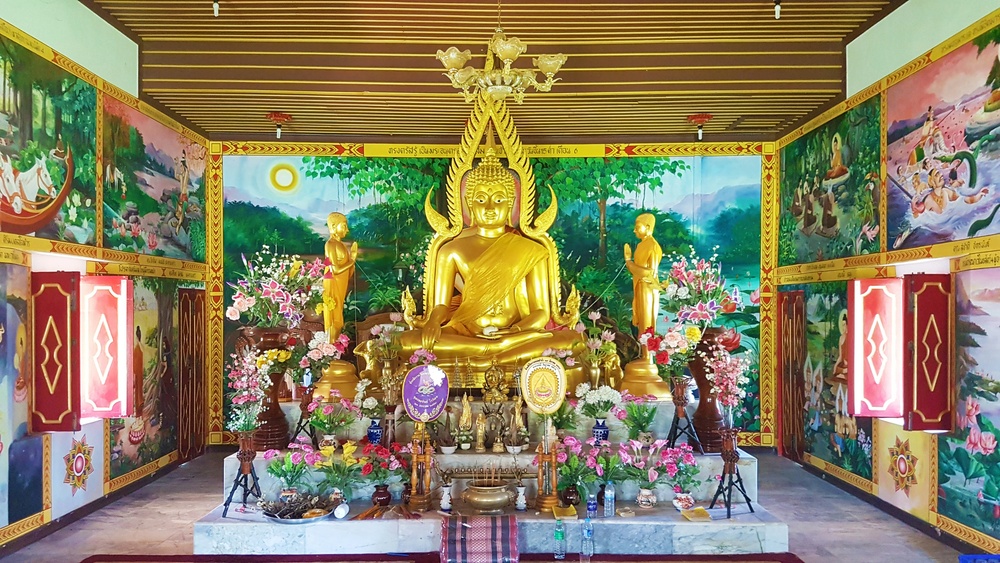India, the cradle of Buddhism, holds a profound spiritual aura that continues to draw pilgrims and seekers from around the world. With a rich tapestry of sacred sites and monasteries, the country is a spiritual haven where Buddhist traditions flourish through meaningful rituals and vibrant festivals. These celebrations are not just cultural events but deeply symbolic practices rooted in centuries-old teachings. Buddhist Festivals in India are a reflection of inner peace, compassion, and the journey toward enlightenment. Let’s explore the spiritual significance behind some of the most celebrated Buddhist festivals in the country.
Understanding the Purpose of Buddhist Festivals
Buddhist festivals are more than joyous occasions—they serve as spiritual milestones in the lives of practitioners. Rooted in the teachings of Siddhartha Gautama, the Buddha, these festivals often commemorate important events such as his birth, enlightenment, and passing into Nirvana. They offer opportunities for reflection, communal harmony, and the reaffirmation of core Buddhist values like mindfulness, non-violence, and compassion.
The rituals involved—chanting, meditation, offering of alms, and community service—are all intended to purify the mind and strengthen spiritual resolve. Participating in Buddhist Festivals in India allows devotees to deepen their connection with the Dharma and walk the path toward liberation with renewed faith.
Buddha Purnima – A Journey Through the Buddha’s Life
When: April/May
Where: Bodh Gaya, Sarnath, Kushinagar, and across India
The most important and widely celebrated of all Buddhist Festivals in India, Buddha Purnima marks three critical events in the life of Gautama Buddha: his birth, enlightenment, and death. Celebrated on the full moon day of Vaisakh (April or May), this festival is both a solemn and joyous occasion.
Spiritual significance: It symbolizes the cycle of life, death, and rebirth, as well as the ultimate goal of Nirvana. Followers engage in prayers, read sacred texts, and participate in meditation sessions. Visiting Bodh Gaya during this festival is particularly moving, as devotees gather under the Bodhi Tree—the very spot where the Buddha attained enlightenment.
Losar – Embracing Renewal with the Tibetan New Year
When: February/March
Where: Sikkim, Arunachal Pradesh, Ladakh
Losar, the Tibetan Buddhist New Year, is a vibrant festival that celebrates new beginnings, purification, and spiritual renewal. It involves a series of rituals to dispel negative energies and bring in harmony and prosperity.
Spiritual significance: Losar is a time to cleanse one’s inner self and let go of past karmas. Through special prayers, offerings, and community gatherings, participants seek blessings for the new year. The sacred dances and chants performed during Losar are believed to drive away evil spirits and usher in good fortune.
Among Buddhist Festivals in India, Losar stands out for its blend of spirituality, tradition, and community bonding.
Hemis Festival – Honoring the Guru of the Himalayas
When: June/July
Where: Hemis Monastery, Ladakh
Celebrated in one of the largest monasteries in Ladakh, the Hemis Festival pays tribute to Guru Padmasambhava, the revered figure who introduced Tantric Buddhism to Tibet. Monks perform Cham dances adorned in elaborate masks and robes.
Spiritual significance: The dances depict the triumph of good over evil and symbolize the destruction of ego and ignorance. Devotees believe that watching these dances and being present at the festival cleanses their karma and helps in spiritual progression. It’s not just a performance but a meditative ritual filled with blessings.
Ullambana – Prayers for the Departed Souls
When: August/September
Where: Bihar, Dharamshala, and other Buddhist centers
Ullambana, also known as the “Ancestor Day,” is a time when Buddhists perform rituals for the liberation of suffering souls. It is believed that offerings made during this period help deceased ancestors attain peace.
Spiritual significance: The festival embodies the values of filial piety and compassion for all beings. According to legend, Maudgalyayana, a disciple of the Buddha, saved his mother from the realm of hungry ghosts through offerings and prayers. Ullambana teaches that through merit-making and good deeds, one can help others even beyond the realm of the living.
This festival highlights the deeply rooted compassion that underpins all Buddhist Festivals in India.
Kalachakra Festival – The Cycle of Time and Enlightenment
When: Varies (occasional event)
Where: Bodh Gaya and other Buddhist sites
The Kalachakra Festival, often presided over by the Dalai Lama, is a spiritually intense ritual involving teachings and initiations based on the Kalachakra Tantra. A significant part of the event is the creation of a sand mandala, later ceremonially destroyed.
Spiritual significance: The Kalachakra symbolizes time, cycles of life, and the path to enlightenment. The creation and destruction of the mandala signify the impermanence of life and the Buddhist concept of shunyata (emptiness). This rare and powerful festival draws thousands of global practitioners seeking higher knowledge.
Conclusion
The Buddhist Festivals in India are not only vibrant cultural events but also deep spiritual experiences that reflect the core philosophies of Buddhism—impermanence, compassion, mindfulness, and enlightenment. Whether through the rhythmic chants of monks, the intricate dances, or quiet moments of meditation, each festival serves as a spiritual compass guiding devotees on the path to inner peace and liberation.
For those seeking more than just sightseeing, these festivals offer a gateway to understand the deeper layers of Indian Buddhism. Experiencing these sacred events can transform not only your journey through India but also your personal spiritual quest.
























